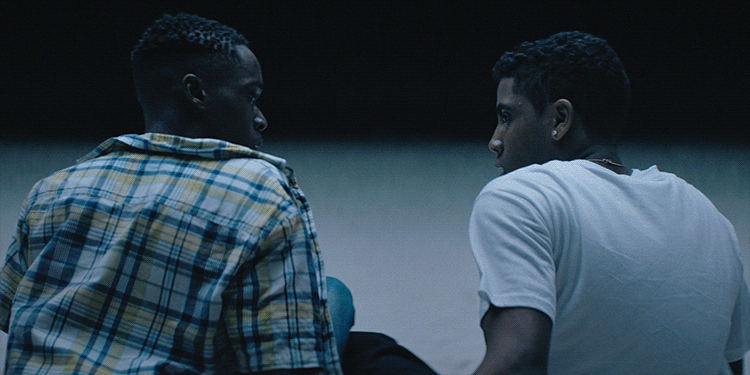Blood, Bone + Water: Visual Themes in Moonlight
By Victoria Editor
Moonlight is “thought-provoking,” “immersive,” and “emotional.”
Moonlight is described by audiences and critics as “thought-provoking,” “immersive,” and “emotional.” Told in a triptych format to paint distinct portraits of queer Black male evolution, this powerful story is directed by Barry Jenkins and based on Tarell Alvin McCraney's unpublished semi-autobiographical play In Moonlight Black Boys Look Blue. This coming-of-age story follows the life of a young man born to a drug-addicted single mother. Our protagonist is confronted with aggression from male peers, battles the reality of his sexuality, and learns to navigate his emotional world. Accompanying this heart-wrenching storytelling is a masterful use of color grading and hydro motifs that penetrate viewers’ souls and assist in transforming Chiron. Here I’ll take you through the screenplay’s main visual themes that created an intimate setting for a big screen theater.
Greek Mythology’s Chiron
Chiron is the youth-natured centaur of healing in Greek mythology. Wise, gentle, and respected, the half-man/half-horse creature is visibly different from others as he possesses human front legs. His foster father, Apollo, was a mentor to him. This parallel is played out in the relationship between Chiron and the drug dealer, Juan. Young Chiron ("Little") develops a close relationship with Juan after being found hiding from school bullies in an abandoned crack house. Having no father figure in his life, Chiron apprehensively takes to Juan. They share an unspoken semblance; one that is not revealed but implied as the story plays out. Moonlight's Chiron and the mythological Chiron connect through the subject of medicine. Chiron grows up to become a successful, feared drug dealer like Juan to provide for himself.
Continuity
Continuity in the film is symbolized by water, the color blue, and palindromes.
Water
1. Juan takes Chiron to the beach to teach him how to swim. Holding him and allowing him to feel a floating sensation in the ocean, Chiron experiences a sort of baptism. This event marks a turning point where Chiron would soon transition to what it means to be himself in a world where others hate him for reasons he didn't understand in early youth.
2. The ice-filled sink of water that a teenage Chiron uses to treat his wounds after being jumped by classmates is used later as a coping mechanism to calm and rejuvenate in adulthood.
Blue
Bathing the characters in shades and tints of blue, lighting is extremely important and the most obvious visual element. In settings where water isn’t involved, the color blue simulates the aforementioned baptism, arousing emotions of loneliness, despair, and melancholy.
Palindromes
A palindrome is a sequence of characters that reads the same backward and forward.
1. Juan takes Chiron under his wing in an attempt to protect him from the same experiences he lived. Coming from an abusive home as well, Juan reveals to Little that he, too, hated his mother for similar reasons. After finding out that Juan deals drugs, Chiron is left disappointed as addiction is the source of his mother’s verbal abuse. Despite this trauma and disdain for the lifestyle of addiction, Chiron becomes a drug dealer later in life just as Juan did.
2. 9:09 PM: the time displayed before moving into the final part of the triptych. The number nine symbolizes service to humanity, karma, and strength of character; all of this was put to the test upon Chiron's visit with his mother after her drug rehabilitation.
Moonlight’s strong visuals serve to progress a compelling plot and integrate the audience into the landscape. This stunning film offers a perspective rarely presented in Hollywood and shines its blue light on the distinct experiences of queer Black life in a violent, hetero-normative society. The characters' narratives encourage us to consider how social environments and upbringing influence one’s identity and how they respond to trauma.



